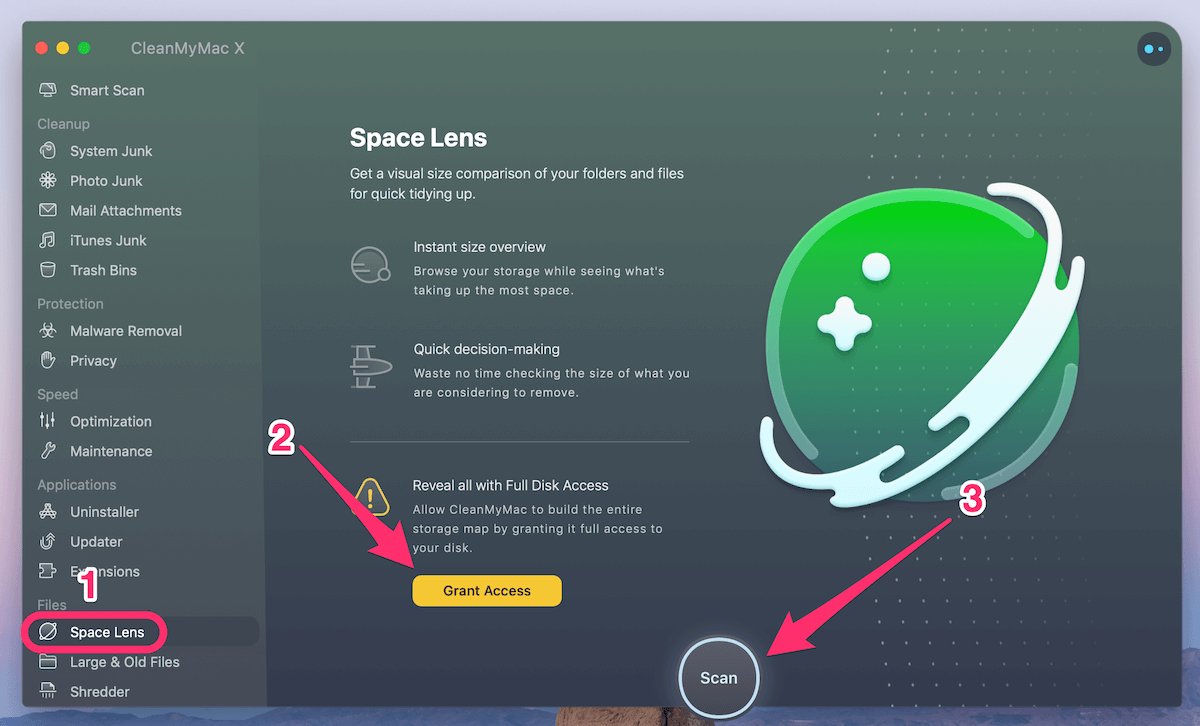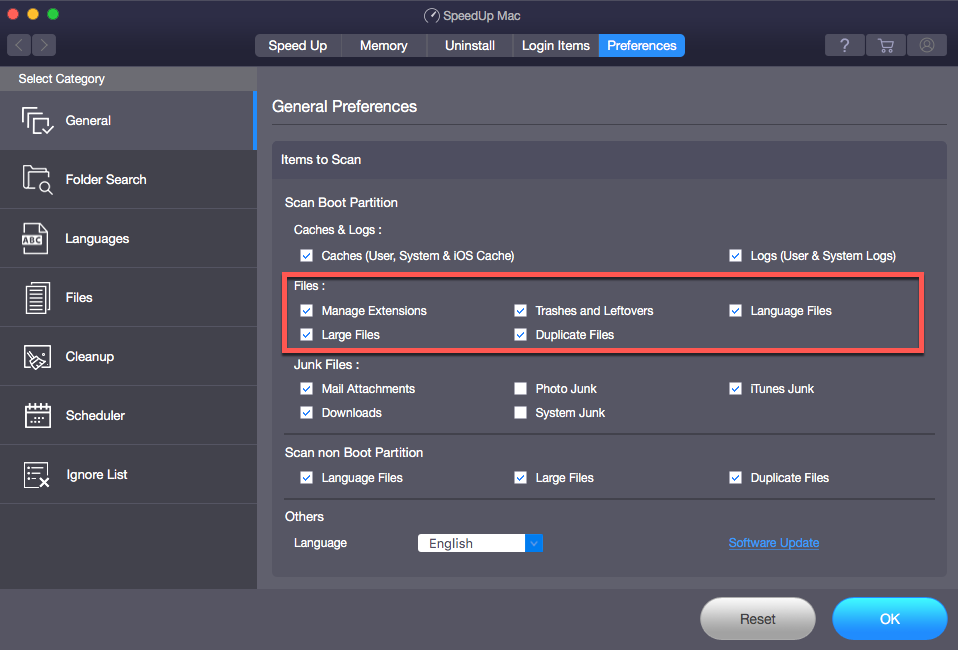

- #Scan for large files on hard drive mac how to
- #Scan for large files on hard drive mac free
- #Scan for large files on hard drive mac windows
The above screenshot shows the result of chkdsk with /f option used on the C: partition.

Let’s look at some screenshots for the above commands to become more familiar with them. Note: Where X: is the letter of the drive partition where chkdsk is to be run. Primarily for this discussion we will be looking at two of the most useful and commonly used options. Use this parameter after imaging a volume to a new hard disk drive.Īs you can see there are a lot of options allowed in the chkdsk tool which can provide some advanced operations.
#Scan for large files on hard drive mac free
NTFS only: Clears the list of bad clusters on the volume and rescans all allocated and free clusters for errors. If you omit the size parameter, /l displays the current size. Changes the log file size to the size you type. Does not check cycles within the folder structure, which reduces the amount of time required to run chkdsk. Performs a less vigorous check of index entries, which reduces the amount of time required to run chkdsk. x also includes the functionality of /f. All open handles to the drive are invalidated. r includes the functionality of /f, with the additional analysis of physical disk errors.įorces the volume to dismount first, if necessary. Locates bad sectors and recovers readable information. If chkdsk cannot lock the drive, a message appears that asks you if you want to check the drive the next time you restart the computer.ĭisplays the name of each file in every directory as the disk is checked. You can use the ? and * wildcard characters to specify multiple files.įixes errors on the disk. Specifies the location and name of a file or set of files that you want chkdsk to check for fragmentation. Use with file allocation table (FAT) and FAT32 only. Specifies the drive letter (followed by a colon), mount point, or volume name. Running chkdsk as part of a normal maintenance routine is good practice if you wish to do so.Įnough of the technical stuff, let’s see what we can do with the chkdsk utility.įirst, let’s outline the tools various command line switches and their uses.Ĭhkdsk ]] ] Over time, you can expect that you will experience such corruption.
#Scan for large files on hard drive mac windows
Anytime Windows shuts down abnormally or has a system crash, it can cause corruption. How does a hard disk become corrupted? Another good question.

Chkdsk attempts to fix these problems by repairing soft bad sectors and marking hard bad sectors so they won’t be used again. Bad sectors come in two forms: soft bad sectors, that occur when data is written badly, and hard bad sectors that occur because of physical damage to the disk. These errors might include corrupt entries in a volume’s master file table (MFT), bad security descriptors associated with files, or misaligned time stamp or file size information about individual files.Ĭhkdsk can also scan for bad sectors. The primary function of chkdsk is to scan the filesystem on a disk (NTFS, FAT32) and check the integrity of the filesystem including filesystem metadata, and fix any logical filesystem errors it finds. So what does chkdsk do exactly? Good question.
#Scan for large files on hard drive mac how to
In this How To article, we will learn what chkdsk does and how to use it to overcome the issues above, as well as others not listed in the intro here. The chkdsk utility must be run from an administrator command prompt to perform its work. Windows provides a utility tool known as chkdsk that can correct most errors on a storage disk. The same holds true for Source and Target disks during Recovery operations. What is the cause of such behavior? These symptoms are typical when corruption exists on the selected Backup Source disk, either in the filesystem itself, or what is known as a “bad sector” (physical damage) on the disk. You find that your system disk is not selectable or displays a red X next to it.Your task fails to run, possibly just stopping completely or displaying an error message stating that the backup cannot complete due to corruption.(Possible disk corruption causing Sector by Sector backup to be created) After the task completes you discover that the size of the backup is bigger than the total amount of data on the disk.You set out to create a backup image of your Windows Operating System disk. Imaging you’ve just purchased Acronis True Image.


 0 kommentar(er)
0 kommentar(er)
